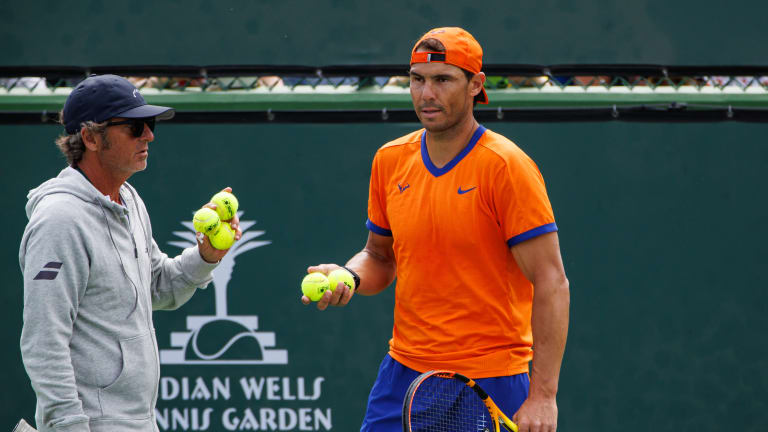Indian Wells, USA
Rafael Nadal’s farewell tour is coming up sadly short of farewells
By Mar 07, 2024Indian Wells, USA
Mackenzie McDonald is paying the college tennis experience forward with a new fund
By Mar 17, 2025Indian Wells, USA
Mirra Andreeva and Jack Draper win breakthrough titles at Indian Wells: What did we just witness?
By Mar 17, 2025Indian Wells, USA
Jack Draper's run through Indian Wells concludes with his first ATP Masters 1000 title
By Mar 16, 2025Indian Wells, USA
Holger Rune vs. Jack Draper: Where to Watch, Indian Wells Preview, Betting Odds
By Mar 16, 2025Indian Wells, USA
Holger Rune reaches first Indian Wells final over Daniil Medvedev
By Mar 15, 2025Indian Wells, USA
Mirra Andreeva vs. Aryna Sabalenka: Where to Watch, Indian Wells Preview, Betting Odds
By Mar 15, 2025Indian Wells, USA
Mirra Andreeva, 17, advances to Indian Wells final, beating Iga Swiatek in chilly conditions
By Mar 15, 2025Indian Wells, USA
Ruthless Aryna Sabalenka storms past Madison Keys, 6-0, 6-1, in semifinals of Indian Wells
By Mar 15, 2025Indian Wells, USA
Carlos Alcaraz vs. Jack Draper: Where to Watch, Indian Wells Preview, Betting Odds
By Mar 15, 2025Rafael Nadal’s farewell tour is coming up sadly short of farewells
That hurts in Indian Wells, a place he loves, and where he can “be with calm.”
Published Mar 07, 2024
Advertising

Nadal looking up after capturing the 2013 BNP Paribas Open at Indian Wells.
© AFP via Getty Images
Advertising
Advertising

Toni Nadal, Rafa's taskmaster head coach, never made the trip to Indian Wells, so everyone in his camp was a little more at ease. At the same time, it seemed to facilitate deeper technical discussions with Francisco Roig, his second coach.
© © TENNIS PHOTO NETWORK